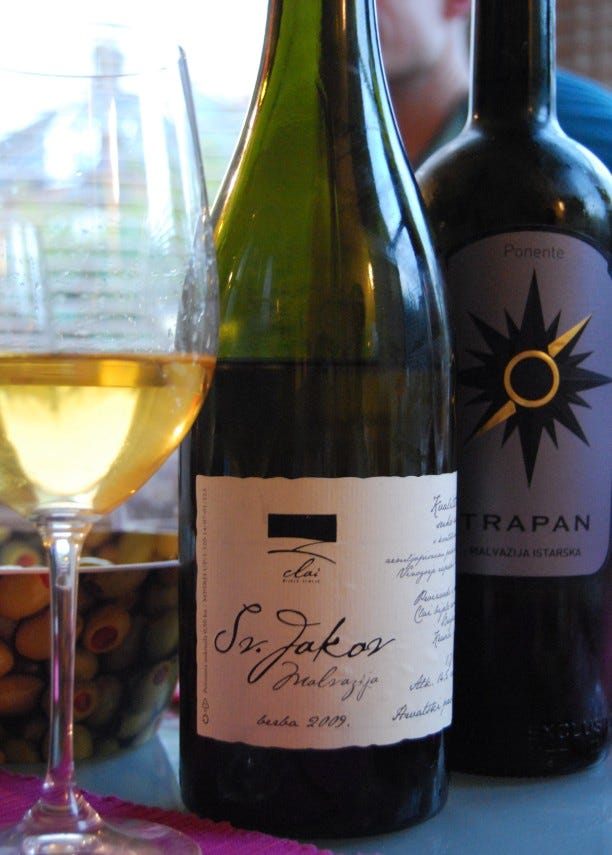Istrian wine, naturally

One grape, two very different approaches to label design
I've had some wonderful encounters with Croatian wines over the years - the muscular reds from Dalmatia, on a visit to Dubrovnik back in 2003, and more recently an excellent Istrian expression of Malvasia. In a few weeks time I'll be visiting classic Dalmatian wine country again. Staying on that theme, here is a review of three varied and frequently splendid offerings from Istria (Central/Northern Croatia), all of which are available from specialist UK importer Pacta Connect.
Trapan Ponente 2010
Ponente is a fresh, young Malvasia Istriana from fresh, young producer Bruno Trapan. There's generous acacia blossom, pineapple and melon on the nose, heralding a medium bodied, slightly nervy palate with more or less the same flavours. I detected just a tiny smidgen of Malvasia's trademark bitterness on the finish. When it's not overdone this can be rather nice - as here - since it refreshes in much the same way that tannins do in a red…
Keep reading with a 7-day free trial
Subscribe to The Morning Claret to keep reading this post and get 7 days of free access to the full post archives.




